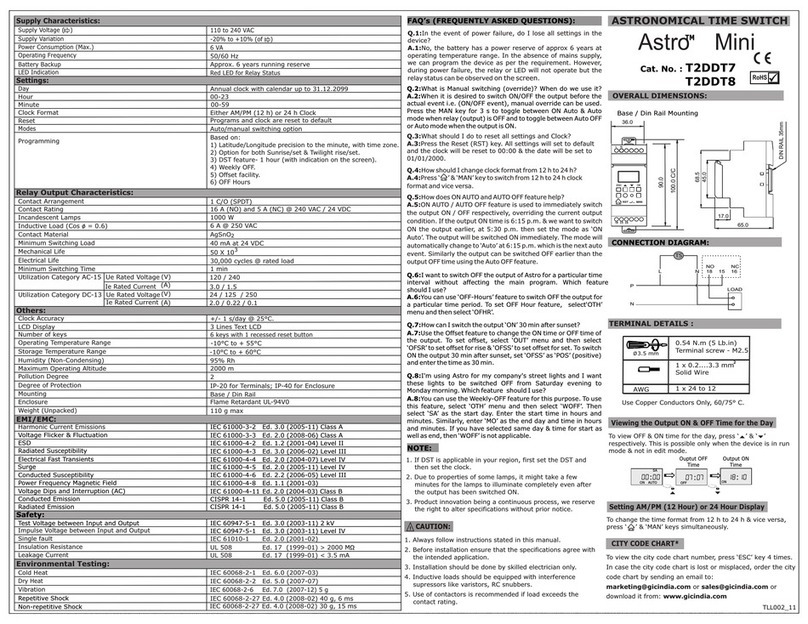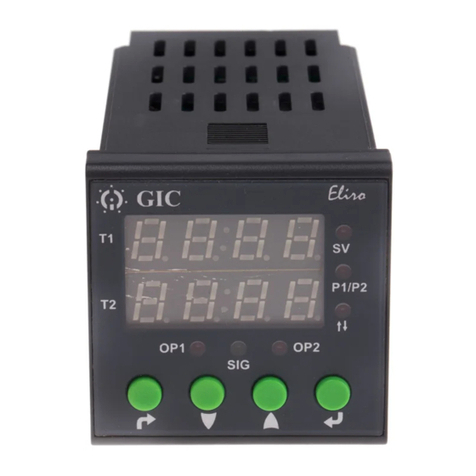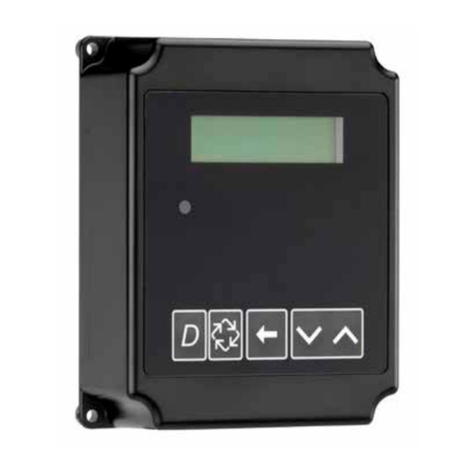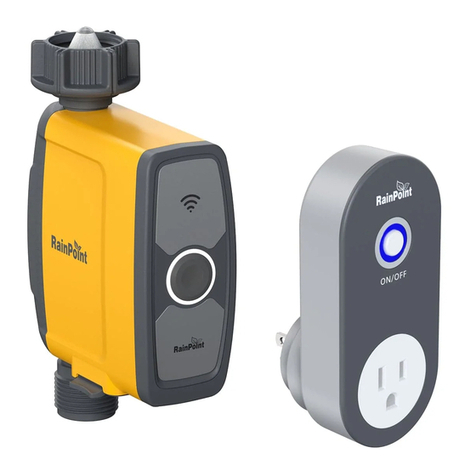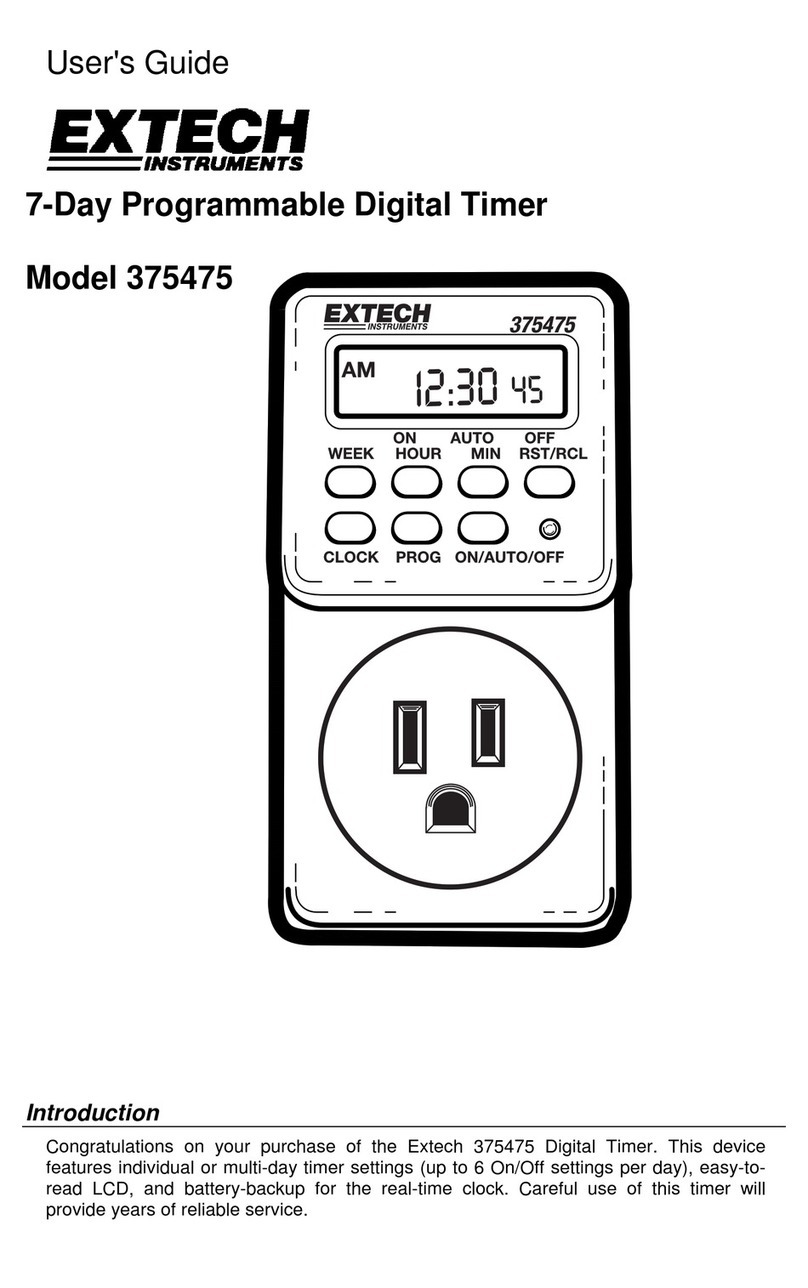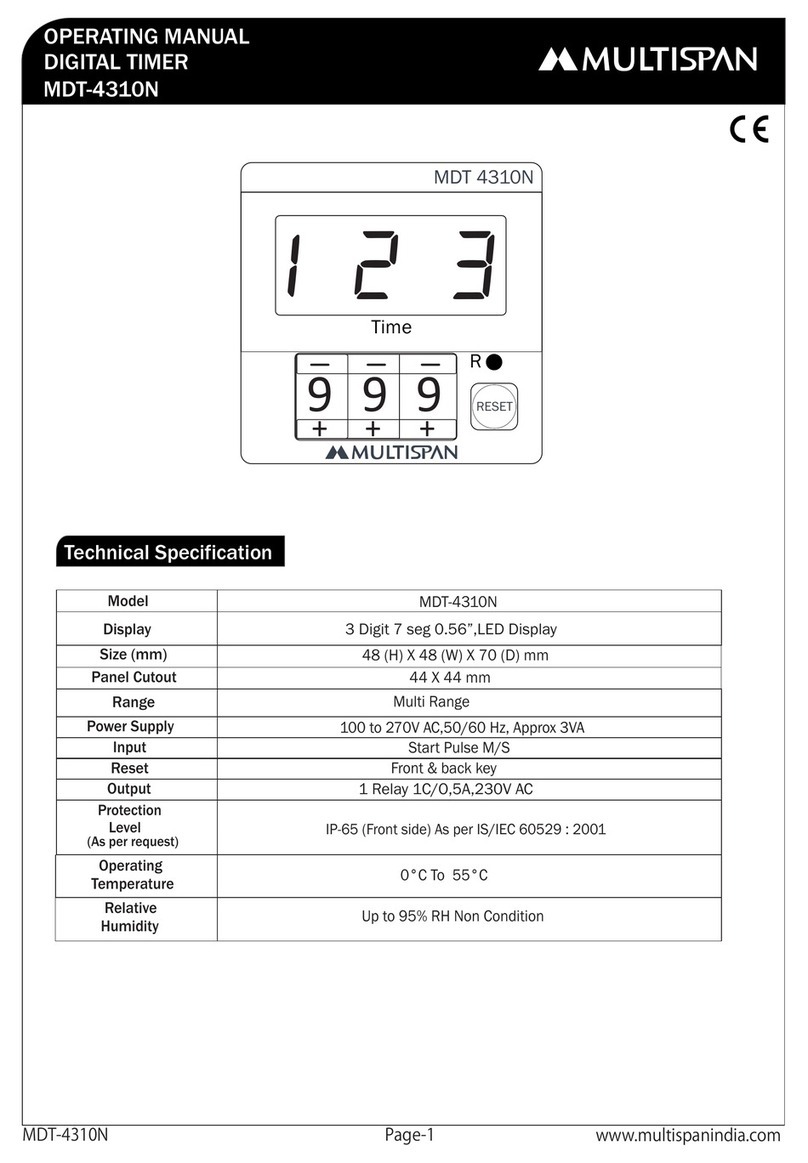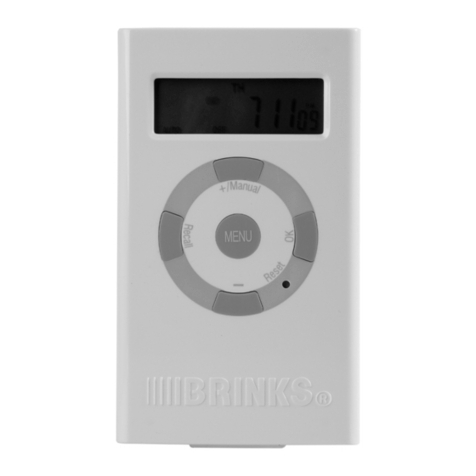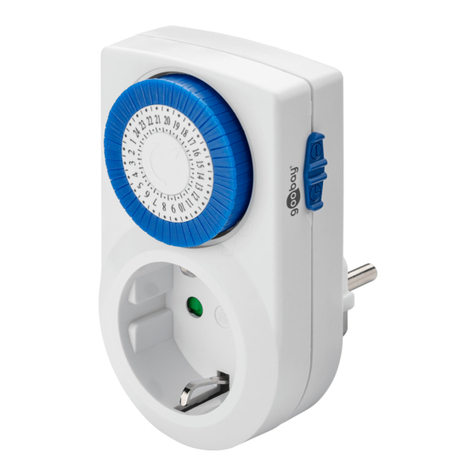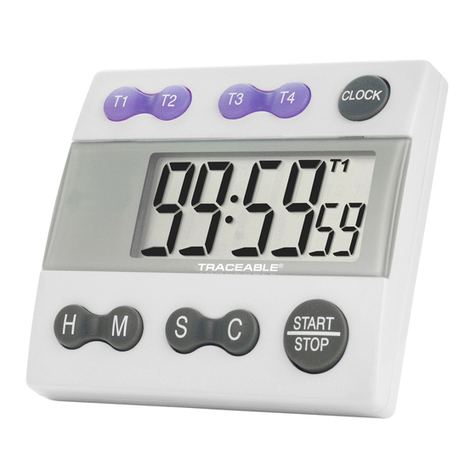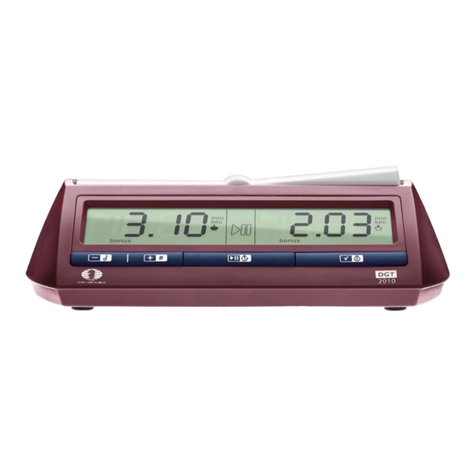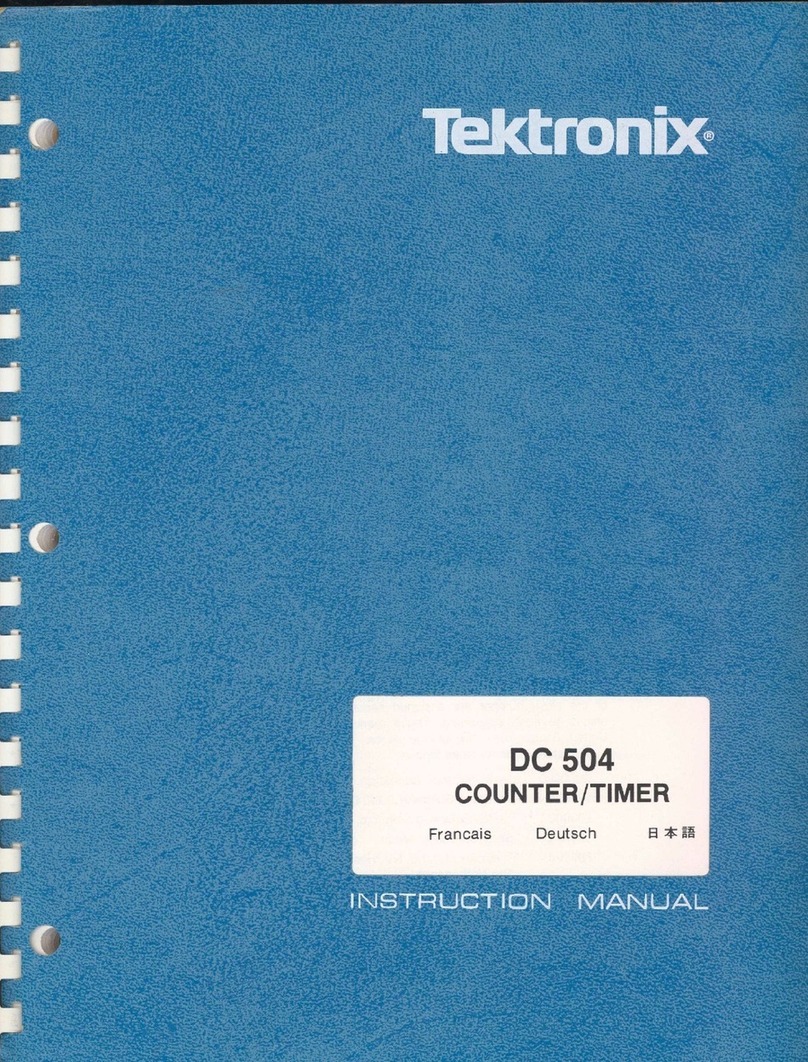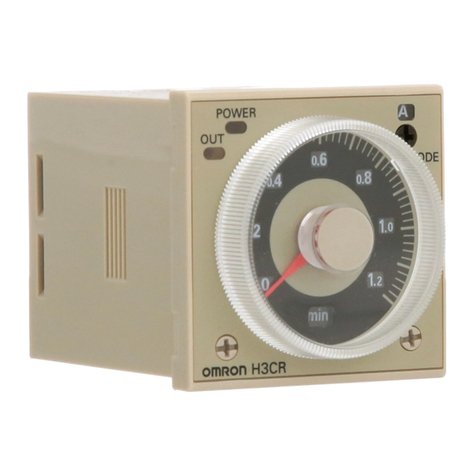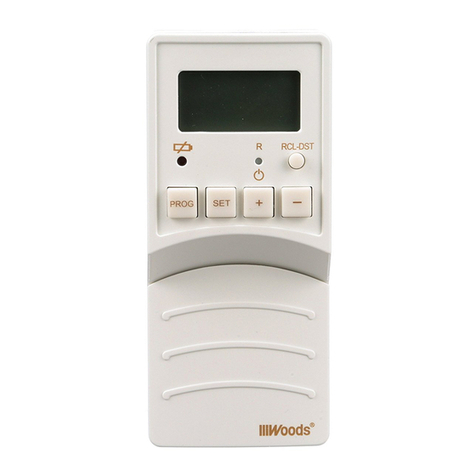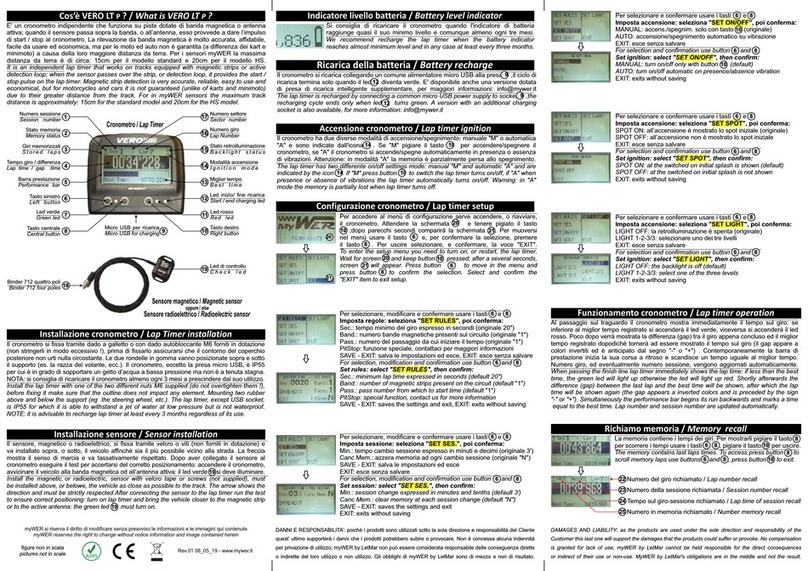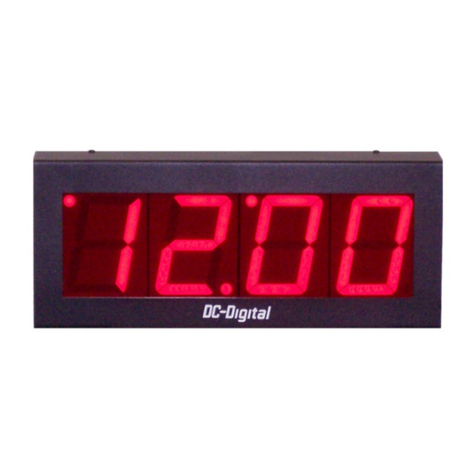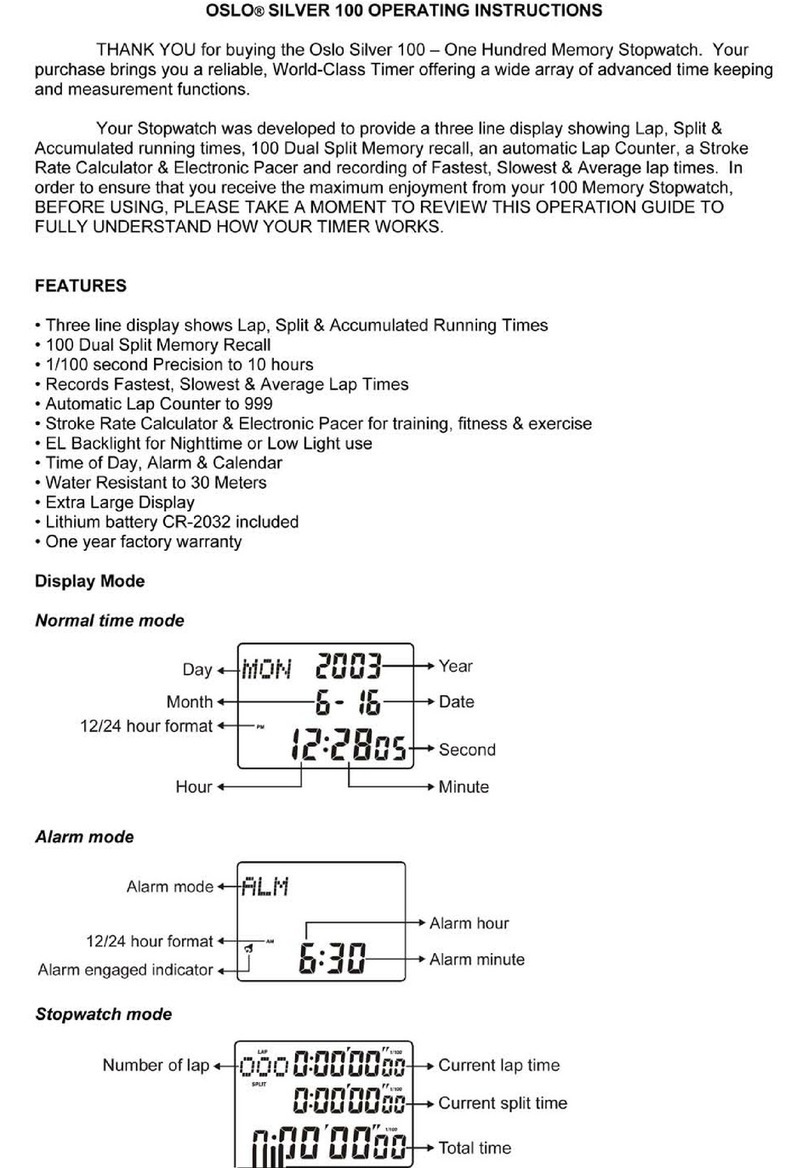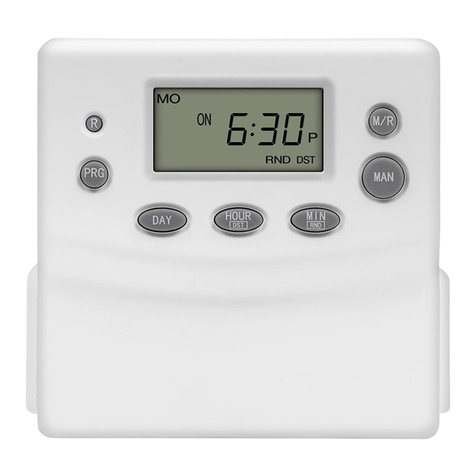GIC Astro T2DDT0 User manual

DIGITAL TIME SWITCH- Astro™
RoHS
SAFETY NOTICE:
1. Only qualified persons are authorized to install the ASTRO.
2. Automation and control devices must be installed so that they are protected
against any risk of involuntary actuation.
3. It is essential to ensure that all control system connections meet applicable safety
standards.
4. Fluctuations or variations in the mains supply voltage should not exceed the
tolerance stated thresholds.
“Astro” is an astronomical time switch specifically designed for lighting
applications. One can program the ASTRO to turn ON and turn OFF the light with
reference to the sunrise and sunset. R, Y, B inputs can be looped to address single
phase distribution or independently given to control 3 phase distributions. Relay
channels can be independently programmed for ON or OFF operation by specifying
the time offset with reference to sunrise and sunset or twilight rise and set.
CONNECTION DETAILS:
To connect Astro to PC using Serial or USB port: Astro has TTL Serial Port.
Use TTL to RS232 cable [GFDNN2S] or USB cable [GFDNN1] for communication
between Astro & PC.
To connect Astro in RS485 network: Use standard isolated RS232 to RS485
2W/4W converter with Automatic flow control to connect in RS485 network. Connect
TTL to RS232 cable [GFDNN2S] to the Astro.
•Season Mode: During rainy season or in cloudy
atmosphere, sunlight may be insufficient. Hence
different time offset needs be programmed to control
light switching. User can program period of such
season and the related time-offset. This feature helps
switch lights early with respect to sun rise/set and
automatically move back to original settings after the
season period. To set this feature, refer page 3->
Screen tagged as ‘4’.
•Day-light Saving Time (DST): DST is the period in
which clocks in certain countries are set one hour or
more ahead of standard time to effectively use natural
daylight. ASTRO provides settings to easily define DST
start and end months and DST offset time to
effectively manage the shifting of clock year after year
without any manual intervention. To set this feature,
refer page 3-> Screen tagged as ‘7’.
•UV/OV Mode: When Under / Over Voltage condition
prevails, load can be tripped off thereby protecting
load from damage due to extreme voltage
irregularities. Users can set Under & Over Voltage as
per their requirement. To set this feature, refer page
3-> Screen tagged as ‘5’.
•Modbus Communication: Three Phase version of
Astro supports Modbus RTU communication protocol
to read coil status, write or override coils, set season
periods etc. from SCADA software. Modbus related
information is mentioned on page 2. To set this
feature, refer page 3-> Screen tagged as ‘8’.
MANUAL OVERRIDE MODES:
By default and on the field, the device is generally in
“AUTO” mode shown on the screen as “Qn-A”. But, for
the purpose of maintenance or because of extremely
bad weather conditions for forceful switching, user has
an option of four different override modes for output
channel switching.
1. Manual OFF (T2DDT0): This override can be used
to turn off the output channel forcefully. Once this
override is selected, the output remains in OFF
condition forever unless user selects another mode.
This is valid even EUT is powered OFF and ON. The
manual mode always overrides other operating mode.
Shown on screen as “Qn-M x”.
2. Manual ON (T2DDT0): This override can be used
to turn on the output channel forcefully. Once this
override is selected the output remains in ON condition
forever unless user selects another mode. This is valid
even EUT is powered OFF and ON. The manual mode
always overrides other operating mode. Shown on
screen as “Qn-M√”.
3. Auto OFF (T2DDT0, T3DDT0): Used to turn OFF
the output channel forcefully. But the OFF condition will
not be forever. The device will automatically change the
operating mode from Auto OFF to AUTO on next auto
event. For example, user selects Auto OFF at 4:00 A.M.
and device has OFF event at 7:00 A.M. The EUT will
switch OFF from 4:00 A.M. to 7:00 A.M. Device will
automatically shift to AUTO mode at 7:00 A.M. which is
next auto event and remain OFF till next ON event.
Shown on screen as “Q1-Ax”.
4. Auto ON (T2DDT0, T3DDT0): Used to turn ON the
output channel forcefully. The ON condition will not be
forever. The EUT will change the operating mode to
AUTO on next auto event. For example, user selects
Auto ON at 4:00 P.M. and EUT has OFF event at 6:00
P.M. The EUT will remain ON from 4:00 P.M. to 6:00
P.M. and become OFF at 6:00 P.M because device will
automatically shift to AUTO mode at 6:00 P.M. which is
next auto event. Shown on screen as “Q1-A√”.
Changing Operating Mode:To override the operating
mode of output channel Q1 - Press Z1 [Q2 –Press Z2,
Q3-Press Z3] key on the RUN screen. On every Z1 key
press event, the operating mode changes.
Single Phase Astro:
LN
50/60 Hz
240 VAC
Supply
NEUTRAL
PHASE
250mA
110 -240 VAC
50 / 60 Hz
OUTPUT
2 X RELAY / 8A
Q2
Q1
PHASE
1. MR1:- Coil of Contactor 1
2. MY2:- Coil of Contactor 2
LOAD MC1 MC1
ESC
Z2
OK
Z1 Z3
Z4
DEL ALT
Astro
BASIC FEATURES:
•Trigger Modes: The time settings of all outputs
can either be based on sunrise/sunset or
twilight. The trigger mode SRISE/SET will
provide the reference time from sunrise/sunset,
while the trigger mode TWILIGHT will provide
the reference time from start/end of twilight. To
set this feature, refer page 3-> Screen tagged
as ‘6’.
•Operating Modes: ASTRO has three operating
modes ON, OFF, and PULSE. An 'ON' or ‘OFF’
op-mode causes an output to be turned ‘ON’ or
'OFF’ with respect to sunrise/sunset. A 'PULSE'
op-mode is to be used to have an output ON for
few seconds from a particular time. To set this
feature, refer page 3-> Screen tagged as ‘2’.
•Offset: It may be necessary to have an output
action before or after some time of
sunrise/sunset. This Offset from sunrise/sunset
can be achieved using OFFSET feature of the
ASTRO. ASTRO allows offset up to +/- 10:59. To
set this feature, refer page 3-> Screen tagged
as ‘1’.
•Off-Hours: This feature is to turn off any
output for a particular time period. Maximum 23
hours of Off-hours can be set individually for
every output. For example, off-hours from
23:00 to 2:00 will switch the output OFF for
three hours everyday. To set this feature, refer
page 3-> Screen tagged as ‘1’.
•Alternate Mode: In this mode, the Off-Hours
feature is applied to alternate output on
alternate days. This mode is useful to save
energy due to off-hours feature and is useful to
maximize load's life due to alternate action. For
details, see Alternate mode details. To set this
feature, refer page 3-> Screen tagged as ‘3’.
•Weekly Off: This feature automatically keeps
off the output on weekly off day(s). However
ASTRO allows to program weekly off day(s) and
related begin/end time. This feature offers
energy savings by switching an output OFF on
weekly-off day(s). To set this feature, refer
page 3-> Screen tagged as ‘1’.
Page 1
MECHANICAL DIMENSIONS:
Ø4.2
DIN RAIL
(35 mm-SYMMETRICAL)
THICK
WITHDRAW CLIPS
FULLY WHEN
SURFACE MOUNTING
INSERT SCREW DRIVER
TO RELEASE CLIP
Three Phase Astro with Communication Cable:
Cable can be used to monitor channels or diagnostic
status through PC side software or Modbus.
Q3
Q2
Astro
PC
110 - 240 V Ph - N AC [ 3Ph 4 Wire ]
50 / 60 Hz
TO GSM
SERIAL
INTERFACE
CABLE
GFDNN2S
RS 232
SERIAL CABLE TO
SERIAL
PORT
MR MY MB
RPh YPh BPh
Q1
OUTPUT
3 X RELAY / 8A
ESC Z2 OK
Z1 Z3
Z4
DEL ALT
RYBN
250mA
RPh
YPh
BPh
N
50/60 Hz
240 VAC
4 wire
3 -Phase
Supply
T
LL001-02
Cat. Nos.: T2DDT0
T3DDT0
Three Phase Astro:
NYRB
Astro
50/60 Hz
240 VAC
4 wire
3 -Phase
Supply
RPh
YPh
BPh
N
Q3
Q2
110 - 240 V Ph - N AC [ 3Ph 4 Wire ]
50 / 60 Hz
MR MY
RPh YPh BPh
Q1
OUTPUT
3 X RELAY / 8A
ESC Z2 OK
Z1 Z3
Z4
DEL ALT
250mA
MR
1. MR:- Coil of Contactor 1
3. MB:- Coil of Contactor 3
2. MY:- Coil of Contactor 2

Specifications Single Phase Three Phase
Product Code T2DDT0 T3DDT0
Supply Voltage (Un) 110 – 240 VAC [-20% to +15%], 50/60 Hz
Power Consumption 8 VA @ 300 VAC
Storage Temperature -10 °C to +60 °C
Operating Temperature -10 °C to +50 °C
Switching Contacts 2 3
Contact Rating 8A (Res.) @ 240 VAC and 5A (Res.) @ 30 VDC
Utilization Category AC-15 and DC-13
Power Reserve (For Clock Only) 1000 h
Shortest Switching Time (Daily) 1 Minute
Clock Deviation (max) +/- 1 second per day over the operating
temperature range
Geographical Co-ordinates Resolution 1°1´
DST Settable
Manual Override Provided. Use keys on keypad.
Display Backlit LC Graphics display for diagnostic view
Under/Over Voltage (UV/OV)
trip value
Not Applicable Settable UV: 0–220V
And OV: 130–330V
Trip Time for UV/OV Not Applicable 5-16 seconds
Recovery Time Not Applicable 1-4 seconds
Mounting Base/ DIN Rail
Dimension (in mm) 72 X 90 X 67
Weight (Unpacked) 190 g 208 g
EMC tests
Harmonic Current Emissions IEC 61000-3-2 Ed. 3.0 (2005-11) Class A
ESD IEC 61000-4-2 Ed. 1.2 (2001-04) Level II
Radiated Susceptibility IEC 61000-4-3 Ed. 3.0 (2006-02) Level III
Electrical Fast Transients IEC 61000-4-4 Ed. 2.0 (2004-07) Level IV
Surge IEC 61000-4-5 Ed. 2.0 (2005-11) Level IV
Conducted Susceptibility IEC 61000-4-6 Ed. 2.2 (2006-05) Level III
Voltage Dips and Interruption (AC) IEC 61000-4-11 Ed. 2.0 (2004-03) All 7 Levels
Conducted Emission CISPR 14-1 Ed. 5.0 (2005-11) Class A
Radiated Emission CISPR 14-1 Ed. 5.0 (2005-11) Class A
Safety
Test Voltage between I/P and O/P IEC 60947-5-1 Ed. 3.0 (2003-11) 2 kV
Test Voltage between all terminals
and enclosure
IEC 60947-5-1 Ed. 3.0 (2003-11) 4 kV
Impulse Voltage between I/P and O/P IEC 60947-5-1 Ed. 3.0 (2003-11) Level IV
Single Fault IEC 61010-1 Ed. 2.0 (2001-02)
Insulation Resistance UL 508 Ed. 17 (1999-01) 2000 MΩ
Leakage Current UL 508 Ed. 17 (1999-01) < 3.5 mA
Environmental testing
Cold Heat IEC 60068-2-1 Ed. 6.0 (2007-03)
Dry Heat IEC 60068-2-2 Ed. 5.0 (2007-07)
Vibration IEC 60068-2-6 Ed. 7.0 (2007-12) 5 g
Repetitive Shock IEC 60068-2-27 Ed. 4.0 (2008-02) 40 g, 6 ms
Non-repetitive Shock IEC 60068-2-27 Ed. 4.0 (2008-02) 30 g, 15 ms
Appendix A – Selecting a required menu
This section describes how to select a menu. The menu
selection is required either for selecting a sub-menu or for
viewing a functional block for setting parameters. The
following example illustrates how to view today’s
sunrise/sunset.
1.At power ON this screen will
be displayed. Press ‘ESC’ key to
view main menu.
2. Press ‘Z2’ or ‘Z4’ key to
move cursor to "VIEW" Menu.
Then Press ‘OK’ key.
3. Press ‘Z2’ or ‘Z4’ key to
move cursor to "SUN TODAY"
Menu. Then Press ‘OK’ key
4. The Sunrise and set values
will be displayed.
Appendix B - Setting the value of parameter
The following example illustrates the procedure to set the value
of parameter in detail. This procedure can be used for setting any
parameter in function block. Here the Slave ID for MODBUS is to
be set as 224.
1. When user selects “MODBUS CONFG”
option from “TRANSFER” menu, this
screen appears. Press OK to go the next
screen.
2. This screen shows slave ID as 001.
For example to set slave ID as 254,
follow the steps 3 & 4.
3. Now cursor is on the first digit.
Press ‘ALT’ key to edit that digit, then
press ‘Z2’ or ‘Z4’ keys to change the
digit. In order to make first digit as 2 so
press Z2 twice. Then press ‘OK’ to save
the change.
4. Now to move cursor to the next digit
press ‘Z3’ key.
Repeat same procedure to change last
two digits. After changing all digits press
‘OK’ to save settings.
You will again return to “SET MB ID”
screen. Then Press ‘ESC’ until you return
to the main screen.
Degree of Protection:
IP-20 for Terminals;
IP-40 for Enclosure
Pollution Degree: II
Mechanical Life: 10 million
Electrical Life: 0.1 million
Slave modbus ID is 1.
Preset single register function code is 6.
Starting address 0.
Value to be written is 3.
Query: 01, 06, 00, 00, 00, 03, CRC HI, CRC LO.
Response: 01, 06, 00, 00, 00, 03, CRC HI, CRC LO.
Example 4: Preset Multiple Register to change
mode of coils 1, 2, 3 using Function 16[0x10].
To change Q1, Q2, Q3 status.
Slave modbus ID is 1.
Preset Multiple Registers function code is 10.
Starting address is 0.
Values to be writing are 0, 3, and 4.
Query: 01, 10, 00, 00, 00, 03, 06, 00, 00, 00, 03,
00, 04, CRC HI, CRC LO.
Response: 01, 10, 00, 00, 00, 03, CRC HI, CRC LO.
Example 5: Get the description of the type of
controller present at the slave address using
Function 17[0x11].
Slave modbus ID is 1.
Report slave ID function code is 11.
Query: 01, 11, CRC HI, CRC LO.
Response: 01, 11, 0E, 30, 30, 2E, 31, 30, 2E, 30, 30, 32,
AA, 01, 03, 03, 00, CRC HI, CRC LO.
Response Parameters –
Version String [4 to 12 bytes]:
Size of Version String = 9. In response device give ASCII
values of version string.
Example: 00.03.000.
Manufacture code [13th byte] & Set feature code [14th byte]
Product Information [15th byte]: 00 - for single Phase Astro,
03 - for 3 Phase Astro.
Stabilizer Interface [16th byte]: 03- Stabilizer with 3 Phase
Astro.
Reserved- [17th byte].
Note: For Modbus related DST and Season settings, refer
help-file provided with Application Software- ‘Astro-Soft’.
MODBUS: Memory map:
Coil Status
Modbus
Address Parameters Value
Modbus
Address
00001 Relay 1 Status 1- On , 0- OFF 00001
00002 Relay 2 Status 1- On , 0- OFF 00002
00003 Relay 3 Status 1- On , 0- OFF 00003
Holding Registers
Modbus Address Parameter Value Validation
Default
Value
40001 Relay 1 Mode 00 - AUTO 0 to 4 0
04 - Auto On
03 - Auto OFF
40002 Relay 2 Mode 00 - AUTO 0 to 4 0
04 - Auto On
03 - Auto OFF
40003 Relay 3 Mode 00 - AUTO 0 to 4 0
04 - Auto On
03 - Auto OFF
Example 1: Read Status of coil 1, 2, 3 using
Function 1[0x01].
Request to read coils 1-3 from slave device.
Slave modbus ID is 1.
Read coil function code is 1.
To read coil 1 - 3 modbus coil address is 0 -2.
Number of coils to be read is 3.
Query: 01, 01, 00, 00, 00, 03, CRC HI, CRC LO
Response: 01, 01, 01, 07, CRC HI, CRC LO
Here Data-07[111] i.e. Q3, Q2, Q1 are ON.
Example 2: Read mode of coil 1, 2, 3 using
Function 3[0x03].
Slave modbus ID is 1.
Read holding register function code is 3.
Coil starting address 0
Number of coils to be read are 3.
Query: 01, 03, 00, 00, 00, 03, CRC HI, CRC LO
Response: 01, 03, 06, 00, 03, 00, 00, 00, 04,
CRC HI, CRC LO
Example 3: Preset Single Register to
change mode of coil 1, using Function
6[0x06].
To change Q1 status to Auto OFF mode
Page 2
Q1-A Q2-A
Q3-A
18/09/09 WED
11:00 ESC
EDIT…
VIEW…
SETTINGS…
TRANSFER…
SUN TODAY
Q TODAY…
VOLTAGE NOW
DST DATE
RISE
06:15
SET
17:47
SET MB ID
SLV ID 001
SLV ID 201
SLV ID 224
Terminology used in this leaflet:
Under Voltage is voltage below
which load will become OFF.
Over Voltage is voltage above
which load will become OFF.
Once Load becomes OFF due to
Under Voltage condition, it will
become ON only when Voltage
becomes = (Under Voltage +
Hysterisis). If Load becomes OFF
due to Over Voltage condition, it will
become ON only when Voltage
becomes = (Over Voltage -
Hysterisis). Hysterisis is kept as 15
Volts. This is to avoid chattering of
contactor.

PRESS
Z2 & then
OK
For Single phase,
RUN Screen
For Three Phase
3 Relay, RUN Screen
PRESS
OK
PRESS
Z2
TWICE
& OK
PRESS
Z2 TWICE & OK
For 3 phase Astro
PRESS
OK
PRESS
Z2 & then OK
OR
For Three Phase when
connected with GSM
For single
phase Astro,
Modbus
config is not
there.
PRESS
OK
PRESS
OK
PRESS
OK
PRESS
OK
You can set
Over Current
and CT Ratio
here.
OC can be set
up to 199.9 A &
CT Ratio can be
set up 40
This screen is
to set OC Trip
Time.
You can set
Trip Time
between 1 to
180 min
Press Z2
twice &
then OK
PRESS
OK.
Screen will
be as
Follows
If GSM is
connected:
PRESS
OK
Press ALT key to edit
and then Z2 key to
select CUSTOM.
Note: For selecting a required menu refer Appendix A & fo
r
setting the value of paramete
r
refer Appendix B
PRESS
OK
Press ALT key to
edit and then Z2
key to select Y.
Then
p
ress OK
PRESS
Z2 TWICE & OK
PRESS
OK
PRESS
Z2 & OK
Press ALT key to
edit and then Z2
key to select Y.
Then
p
ress OK
KEYS
PRESS
ESC
PRESS
ESC
PRESS
ESC
PRESS
OK
PRESS
OK
PRESS
OK
PRESS
OK
PRESS
OK
PRESS
Z2 & OK
PRESS Z2 ONCE &
OK TWICE
PRESS
OK
PRESS
OK
PRESS
Z2
PRESS
OK
PRESS
OK
PRESS
OK
PRESS
OK
PRESS
Z2
PRESS
Z2
PRESS
Z2
PRESS
ESC
PRESS
ESC
PRESS
ESC
PRESS
OK
PRESS
OK
PRESS
OK
PRESS
OK
PRESS
OK
PRESS
ESC
PRESS
ESC
Q1-A Q2-A
18/09/09 WED
11:00 ESC
Q1-A Q2-A
Q3-A
18/09/09 WED
11:00 ESC
EDIT…
VIEW…
SETTINGS…
TRANSFER…
EDIT…
VIEW…
SETTINGS…
TRANSFER…
EDIT…
VIEW…
SETTINGS…
TRANSFER…
EDIT…
VIEW…
SETTINGS…
TRANSFER…
Q SETTINGS..
ALT MODE..…
SEASON MODE…
ELECT. PARA…
SUN TODAY
Q TODAY…
VOLTAGE NOW
DST DATE
CLOCK
LAT/LONG
PASSWORD
TRIGGER MODE
CARD->DEVICE
DEVICE TO CARD
MODBUS CONFG
Q1 PARAMS..
Q2 PARAMS..
Q3 PARAMS..
OP-MODE Q1
OFFSET
OFF HOURS
WEEKLY OFF
OP-MODE Q1
RISE- OFF
SET - ON Voltage
R=240
Y=240
B=240
DATE/ TIME
TIME ZONE
DST
DD/MM/YY
18/09/09
HH:MM
11:00
DATE/ TIME
TIME ZONE
DST
GMT + 05:30
RISE
06:15
SET
17:47
Q1 TODAY
06:30 OFF
18:37 ON
Volt Amps
R=240 002.4
Y=240 002.4
B=240 002.4
X CUSTOM
DST BEGIN
WEEK : 1ST
DAY : SUN
MONTH : JAN
DST BEGIN
TIME 2:00
DST END
WEEK : LAST
DAY : SUN
MONTH : APR
DST END
TIME 2:00
DST OFFSET
TIME
1:00
LONGITUDE
E 0730-55 ‘
LATITUDE
N 180-31 ‘
ALT
SET ALTERNATE
MODE? N
ALT MODE
COMBINATION
Q1 - 2
ENABLE
SEASONAL
MODE? N
SEASON
PERIOD DD/MM
FROM 01 / 06
TO 01 / 09
SEASON Q1
OFFSET
RISE + 00:30
SET - 00:30
TRIP VOLTAGE
TRIP CURRENT
OC TRIP TIME
SET UNDER
VOLATGE = 170 V
SET OVER
VOLATGE = 270 V
OC R=015.00
OC Y=015.00
OC B=015.00
CR =01
TIME=001 min
SEASON Q3
OFFSET
RISE + 00:30
SET - 00:30
SEASON Q2
OFFSET
RISE + 00:30
SET - 00:30
SEASON ALT
OFFSET
RISE + 00:30
SET - 00:30
2
6
5
7
4
1
3
SET MB IDSLV ID 001
8
SLV ID: Slave ID. Limit
247.
Below parameters are
fix:
Baud Rate : 9600
Parity : None
No of Bits :8 bit
Stop Bit : 1
Page 3

Page 4 of 4
TODAY TOMMORROW DAY AFTER TOMMORROW
FAQ’s:
Q. Astro’s o/p (Load) is not getting On
ÆPlease check that you have set under-voltage / Over-voltage properly. Also
check that, you have made connection as per given wiring diagram only.
Phase analysis will be displayed on Screen in event of phase Failure or
Unhealthy condition (Over / Under Voltages)
Q. If One or Two phase fails, will Astro work on remained phase?
ÆYes. Product will work up till last phase remained. Suppose R and Y phase
failed in Three phase Astro then it will work on the last phase i.e. B.
So output of only Q3 will be present
Q: Is the light
Q. Can I monitor Voltage of different phases?
ÆYes, with the 3 phase version. You can monitor voltage on each phase which may help debugging. Press OK button on main Screen to view Voltages.
Q. Assume a setting on Astro having R ph OFF with Y ph & B ph as ON (in alternate mode as Q1-Q2-Q3). If due to any reason if Y or B Fails or Under/Over voltage occurred to Y or
B phase, what will happen?
ÆIn this case, Astro will automatically switch ON R ph & will switch OFF the faulty Phase. This will ensure Proper lighting.
Q. Can Three Phase Astro be used in Single Phase application?
ÆYes for this, we have to loop (short) R, Y & B terminals & connect the phase.
Q. How can I transfer settings from PC to Device/ Device to PC?
ÆFor this you can use application software “Astro-Soft” provided with the device. When you run the application software follow the steps as given below:
1. Select type of device from Device Type tab.
2. Select Country, State, City.
3. Select other settings as per requirements.
4. Connect TTL to RS232 cable [GFDNN2S] or USB cable [GFDNN1]. Refer Connection Details given on page 1.
5. Select CommPort under the Port Settings tab, Select require port.
6. Select "PC to Device" option under the Transfer tab to transfer settings to the Astro-unit.
OR to transfer settings from device to PC Select "Device to PC" option under the Transfer tab to transfer settings from Astro-unit to PC.
Q. What are AUTO-ON / AUTO-OFF modes?
ÆAUTO-ON: - When this mode is enabled, relay will switch ON instantaneously irrespective of program & will shift automatically into AUTO/Program mode during the next event.
Now if you press AUTO-ON before sun-set, then Relay will be ON. Now next event is sun-set. So on sun-set, mode will be changed to “AUTO” again. Also note that Relay condition
(ON/OFF) will depend on Program settings. AUTO-OFF working in a similar way. Only difference is Relay will be instantaneously OFF up to next event. In case of unhealthy condition
on phase, device will automatically resume AUTO Mode. For e.g. You have made AUTO-ON for Relay coil Q1 (R phase) & if unhealthy power condition (Over/Under/ No Voltages)
comes then AUTO-ON mode is converted in to AUTO Mode.
Password: All settings are password protected. User can set password using SETTINGS->PASSWORD menu.
Sun-Set Sun-Rise
AUTO-ON pressed here
Mode will change to
“AUTO” here
AUTO-ON pressed here
FAQ’s:
Q. Astro’s output (Load) is not switching ON.
ÆPlease check whether you have set Under Voltage / Over-Voltage properly. Also check if the connection is as per given wiring diagram. Status of the Phases will be displayed on
Screen in the event of phase Failure or Unhealthy condition (Over / Under Voltages).
Q. If one or two phase fails, will Astro work on remaining phase?
ÆYes with 3 phase version, Product will work until last phase available. Suppose phase R and Y failed in Three Phase Astro then it will work on phase B. So output of only Q3 will
be present.
Q. Is the light sensor needed for ASTRO time switch?
ÆNo. Its switchin
g
is based on calculation of sunrise and sunset b
y
p
ro
g
rammin
g
date, time and local coordinates
(
Lon
g
itude & Latitude
)
.
Page 4
Q. I want to use the same program at different stations. Is there an option for copying a program from a unit to the
other unit?
ÆYes, you can make use of the accessory: Memory Card. Just insert the memory card inside the slot provided in
the unit. Press ESC to go to the EUT MENU. Select TRANSFER. Select "DEVICE->CARD" option in the unit. Thus, the
program in your Astro-unit is stored into the Memory Card. Then you can insert the same card into other unit and
follow the same steps explained above for another unit which is at different station. But instead of "DEVICE->CARD"
option select and use "CARD->DEVICE" option. Thus programs in both Astro-units will be same as required in your
application.
Q. I want to switch a load ON/OFF after/before one hour from Sunrise/Sunset. What should I do?
ÆUse Offset feature and set the offset time as one hour from Sunrise/Sunset. To use offset feature, go to the
EDIT->Q SETTINGS->Q1 OR Q2 OR Q3 PARAMS->OFFSET in Astro. Set Offset time as ‘+/- 01:00’ for sunrise &
Sunset by using ‘Z’ keys. Or you can transfer same settings from Astro-Soft to device.
Q. In case of three phase connection, is there any relationship between input supply & output relay?
ÆYes. R phase corresponds to output Q1, Y phase corresponds to output Q2, B phase corresponds to output Q3
Please note that, R phase should be applied to 'R' terminal, Y phase should be applied to 'Y' terminal & B phase
should be applied to 'B' terminal.
TERMINAL DETAILS:
Q. How can I use temporary ON feature e.g. Siren for 15 sec at Sunrise or Sunset?
ÆGO to Q1 or Q2 or Q3 settings according to the output you want to set Siren. Select "OP-MODE" as a "PULSE". Select "Pulse Duration" of 15 sec.
For changing output mode to Pulse refer page 3->screen tagged as 2.
This manual suits for next models
1
Other GIC Timer manuals
